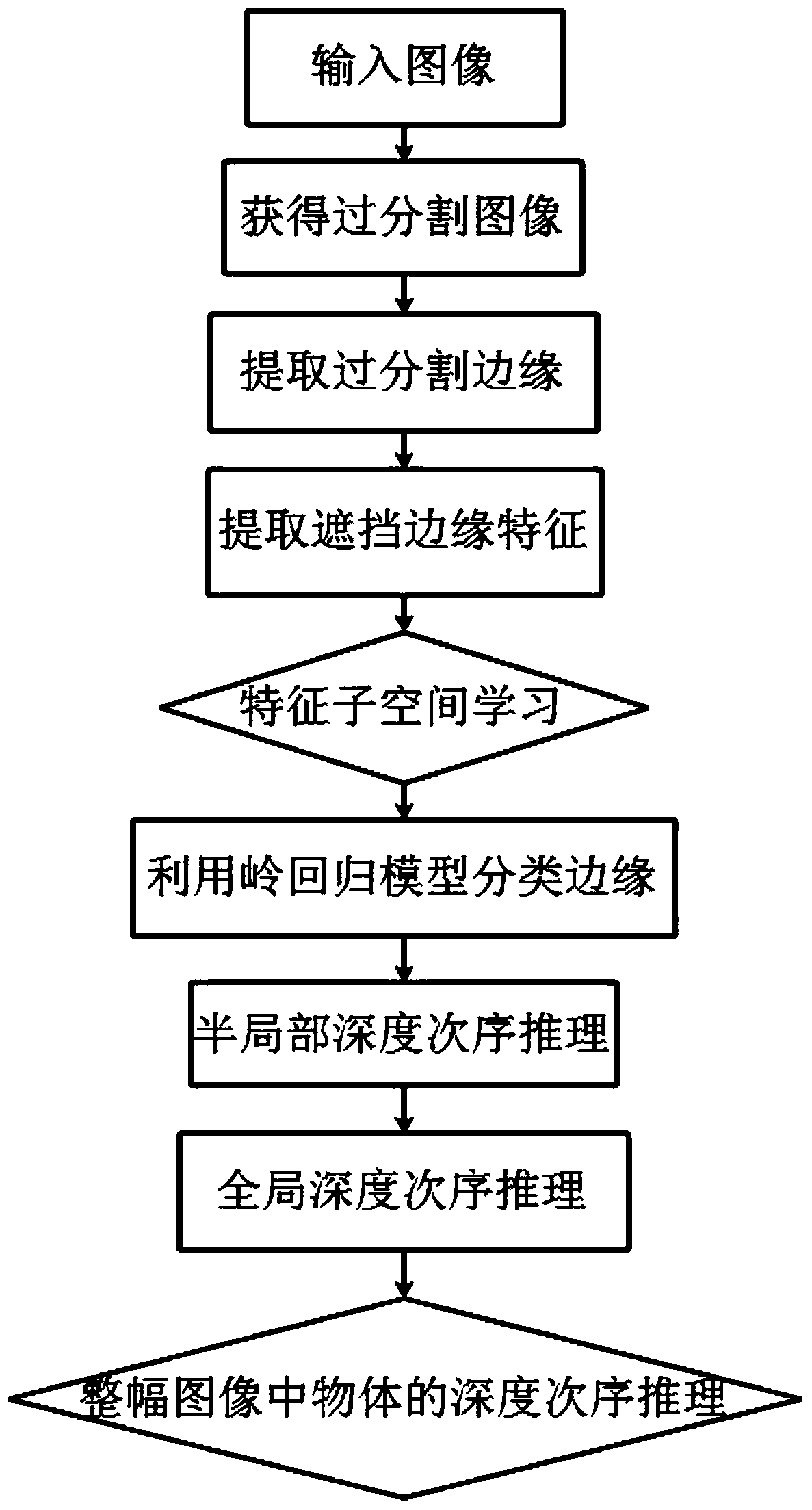A Depth Order Reasoning Method Based on Objects in Monocular Images
A technology of depth sequence and reasoning method, which is applied in the field of computer vision, can solve problems such as redundancy, and achieve the effect of improving efficiency, saving time and space
- Summary
- Abstract
- Description
- Claims
- Application Information
AI Technical Summary
Problems solved by technology
Method used
Image
Examples
Embodiment Construction
[0027] The present invention will be further described below in conjunction with the accompanying drawings.
[0028] As shown in Figure 1: a depth order reasoning method based on objects in a monocular image, including the following steps:
[0029] (1) Obtain an over-segmented image: First, input an image, perform superpixelization on the input image, and use the SP-UCM method to over-segment the image to obtain the soft boundary map of the original image, and then binarize the soft boundary map to obtain oversegmented image.
[0030] (2) Extracting over-segmented edges: first calculate the connection points of all three forks in the over-segmented image described in step (1), every two connection points form an edge, and a region is formed between multiple edges; then, Record all the connection points, the edges formed by each pair of connection points, and the detailed information of the areas on both sides of each edge. Finally, the over-segmented image is divided into thr...
PUM
 Login to View More
Login to View More Abstract
Description
Claims
Application Information
 Login to View More
Login to View More - R&D
- Intellectual Property
- Life Sciences
- Materials
- Tech Scout
- Unparalleled Data Quality
- Higher Quality Content
- 60% Fewer Hallucinations
Browse by: Latest US Patents, China's latest patents, Technical Efficacy Thesaurus, Application Domain, Technology Topic, Popular Technical Reports.
© 2025 PatSnap. All rights reserved.Legal|Privacy policy|Modern Slavery Act Transparency Statement|Sitemap|About US| Contact US: help@patsnap.com



